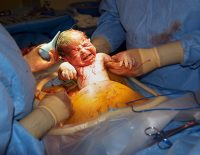Over 50% of early deaths from heart attack, stroke due to lack of awareness.

Lack of awareness about symptoms of heart attack and brain stroke leads to the premature death of 55% patients in the age group of 30-69 years. Most of these deaths occur at home and only 1 out of 10 patients reaches an appropriate health facility for treatment on time, which is the “first golden period period” after the onset of symptoms of these two life- threatening diseases. These startling revelations were made in a study by the doctors of All India Institute of Medical Sciences (AIIMS), published in a Lancet group journal on Monday.
The study said that inability to recognise the severity of illness and financial constraints of patients were major reasons for delays in seeking treatment for acute cardiac and stroke patients. About half of the deceased did not visit any health facility during their terminal illness. Those staying closer to a facility or families with higher income were more likely to reach within the first hour.
These findings were from the first community-based study, conducted to identify the reasons and determinants of delays that lead to premature deaths in the age group of 30-69 years due to acute cardiac arrest and stroke. The study was conducted by the cardiology department, centre for community medicine and neurology department of AIIMS.
The study, funded by the Indian Council of Medical Research (ICMR), was conducted in two out of three tehsils (Badkhal and Ballabgarh) of the Faridabad district of Haryana with an estimated population of 21 lakh in 2020.
The three-delays model was used to assess the delay in seeking correct treatment among those who died of cardiac/stroke emergencies.
According to the findings, out of 435 deaths, level 1 delay was reported in 38.4% cases which was due to non-recognition of symptoms related to heart attack or brain stroke, consultations from neighbourhood practitioners, and financial constraints. About 20% deaths were due to level 2 delay which was the delay in visiting an appropriate facility, delay in arranging for transport and lack of affordability. The level 3 delay due to the lack of money, non-availability of specialists or ICU beds in the facility was reported at 10.8%.
No delay was reported in the remaining cases. One of the authors, Dr Ambuj Roy, a professor in the AIIMS cardiology department, said: “Improving acute care and risk factor management are low-hanging fruits. Early symptom recognition, appropriate triage and immediate treatment can save many young lives.”
The authors said that the establishment of cardiac care units in district hospitals under the National Programme for Cancer, Diabetes and Cardiovascular Diseases and Stroke is aimed at improving access to cardiac care in public facilities. These can be strengthened to provide integrated care for stroke and acute cardiac events.
The health system interventions should be supplemented by efforts to create public awareness in recognising symptoms of heart attack and stroke and by improving insurance coverage for life-threatening conditions.
Authors of this study confirmed the urgency of the need to strengthen acute care responses to improve outcomes. “We have the necessary evidence to reduce the delays in cardiac and stroke care and the benefits of this must reach people at the earliest,” they wrote.








Comments